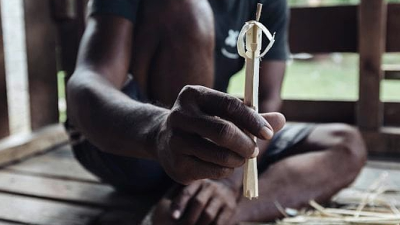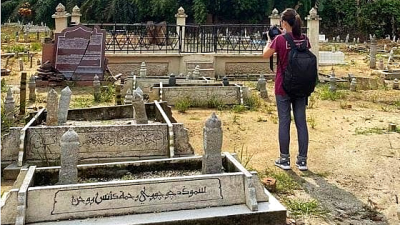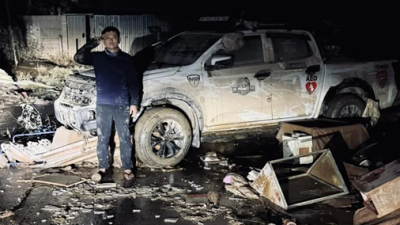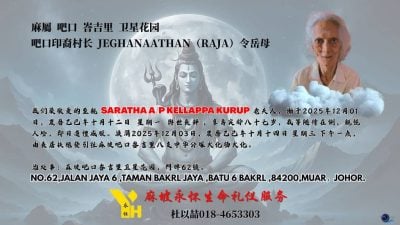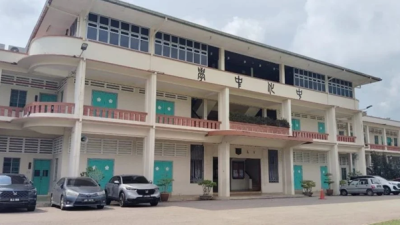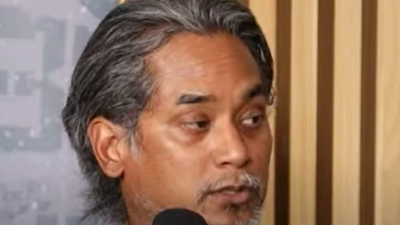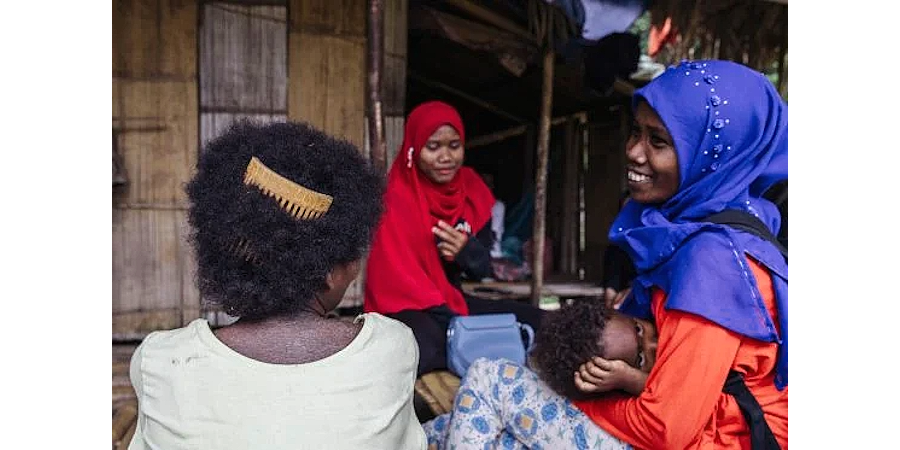
When I was a child, I couldn’t go three sentences without saying the word “die”: it was always “so hot I could die,” “so tired I could die,” or “I’m dying hungry.”
Because it was considered inauspicious, my mother had to write “No saying the word ‘die’” on a piece of paper and stick it on the wall.
Every time I said it, I was fined 10 cents. This story may sound absurd, but it reflects the taboo around death in many Chinese families.
Due to the lack of education about death, I grew up not knowing whether the deceased went to heaven, the Pure Land, the underworld, or the 18 levels of underground referred as hell.
I lost both my grandfather and grandmother in my teens.
In life, they were devoted Buddhist worshippers who burned incense and prayed. Yet, their funerals were filled with hymns and Bible readings.
During my first ancestor worship ritual, I thought we had to burn paper offerings for them to use in the “afterlife,” but my mother said they had already returned to the arms of the Lord.
Many years later, I found out they had converted on their deathbeds. The reason was that their two Christian sons had sent a group of “angels” to the hospital to baptize them.
When I learned the truth, I felt deeply conflicted. On the one hand, I had to respect my uncles’ decision. But on the other, I worried that my grandparents would be “without food,” “without clothes,” and “without money” in the afterlife.
This dilemma was the biggest confusion of my growing-up years. Even my aunt, who claimed to be spiritually sensitive, couldn’t give me an answer.
Instead, my grandfather would often appear in her dreams with mysterious numbers, allowing her to win the lottery every Qingming Festival—using the winnings to treat the descendants to a meal on behalf of the ancestors.
Trying to make sense of “dead people’s money” using capitalist logic doesn’t work, of course. After all, how would my grandfather—who never received any paper money, houses, or cars—transfer excess capital from heaven to the world that we live?
Strangely enough, it was my indigenous friends who helped me understand death.
Their worldview is remarkably similar to Chinese folk beliefs, though expressed in different forms.
The Bateq’s heaven: A universe shared between humans and trees
Take the Bateq people in Kelantan for example. They believe that after death, a person becomes a supernatural being (hala’) and lives in the sky.
In that realm, they no longer need to eat or work, and they enjoy a state of freedom and coolness.
They can also visit their living relatives in dreams, teaching them practical skills and spells.
To ensure that the soul transits smoothly to the afterlife, the Bateq practice tree burials instead of burial in the ground.
Both men and women are wrapped in sarong cloth and mats woven from pandanus mat, placed on a stretcher, and then laid on top of a tree.
The only difference lies in the burial items: men are often buried with blowpipes (sumpit) and quivers, while women are laid to rest with their traditional bamboo combs, flutes, or other personal belongings from life.
To them, the tree canopy is the dwelling place of the soul and a passageway to the afterlife.
According to legend, in ancient times when food was scarce, half of humanity turned into trees to provide food for others.
When people offer themselves to the forest, they can in turn reclaim vitality through the act of foraging. As long as this exchange continues, nutrients circulate between plants and people—symbolising a shared life, history, and identity between humans and trees.
In other words, the Bateq and the supernatural beings form a moral community. When forests are largely destroyed, it signifies that humans have betrayed nature, and disaster will inevitably follow.
In such a case, people are no longer worthy of being called “children of the forest.”
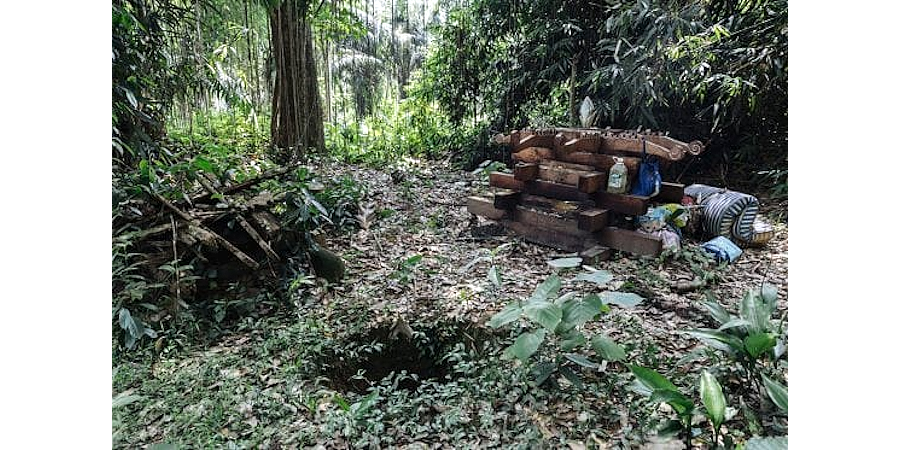
The Jah Hut‘s heaven: Flying to paradise on the wings of birds
The Jah Hut people of Pahang and the Urang Huluk of Johor share a similar universal belief.
They believe that a person has seven souls (ruay / semangat), and only by shedding their “primordial garment” (baju awal) can they return to their place of origin—heaven.
Among the Jah Hut, tombs are built in the shape of wooden pyramids, often adorned with intricate carvings.
At burial, men are laid facing the setting sun while women face the rising sun, but both graves are dug with an empty well in front, to allow the soul to bathe or drink in the afterlife.
Personal belongings such as clothes, cigarettes, and bedding are also placed beside the grave.
Interestingly, family members often attach a chicken wing to the grave—a rooster’s wing for men and a hen’s wing for women—as a kind of “protective umbrella” to help the departed cross a scorching desert and reach the cool paradise known as Pulau Buah (Fruit Island).
French anthropologist Jeanne Cuisinier discovered that the belief in the soul taking the form of a bird is one of the most widespread spiritual concepts in the Malay Archipelago, with the chicken seen as the most basic form of “bird.
For example, during initiation ceremonies, Jah Hut boys must kill a chicken, and the longer it struggles, the greater the masculinity it symbolizes.
Additionally, shamans instruct villagers to carve bird-headed cages (balai berteh kepala burung) to trap evil spirits (Bes)—supernatural entities believed to steal human souls and cause illness.
Wooden carvings of chickens are then hung nearby as offerings in exchange.
The heaven of Urang Huluk: Crossing the sea in a canoe-shaped coffin
The Urang Huluk (People of the Upper Stream) incorporate canoe imagery into their tombstones, with each family having a distinct style—as if they were boarding different “ship models” from various companies to sail toward the oceanic heaven.
Families also dig canals around the grave and place stones at three corners, removing them one by one on the 3rd, 7th, and 14th day, symbolising the official launch of the soul’s vessel.
Influenced by Malay culture, they call heaven “Mecca,” and their oar-like tombstones (kayu nisan) are believed to turn into ivory gifts for the King of Spirits in the afterlife.
Similarly, their “wooden canoes” are buried with a variety of personal belongings such as cooking utensils, clothes, weapons, cigarettes, and betel nut.
If a person’s corpse goes missing, it is believed they have become a Datuk Keramat, a sacred ancestral spirit residing in the upper world.
These spirits are thought to “plant sacred trees” on earth and reveal their locations in dreams, creating a bridge for communication between humans and the divine.
To seek blessings, Urang Huluk shamans instruct the sick to fold seven white paper flowers or offer white cloth and a white chicken as offerings.
If the white chicken returns to the village, it means Datuk Keramat has refused the offering—and the person will not recover.
Crossing to the various afterworld: All roads lead to the same path
These examples show that relationship between the living and the ancestors is fundamentally based on exchange.
To make sense of suffering in this world, we imagine different kinds of afterlives—tree canopies, paradise islands, ocean heavens. These other worlds are interconnected.
So, if heaven truly has many versions, can my grandparents—who were originally Buddhists—safely embrace Christianity? Or were they stranded somewhere in between, with no place to go?
Years later, a Urang Huluk shaman gave me the answer.
He said he once “died” from Covid-19 and briefly entered heaven.
He saw seven giant stones, heard harmonious music, and spoke with angels before being sent back to the human world.
That near-death experience revealed one profound truth:
“I used to believe that people of different races and faiths would go to different worlds after death. But now I know—we’re actually walking the same path.”
More on the Echoes of the Forest

(Yi Ke Kuik is a Master’s student in Anthropology at National Taiwan University focusing on issues related to indigenous people in Peninsular Malaysia. Founder of myprojek04 photography initiative and writes for a column called Echoes from the Forest (山林珂普) in Sin Chew Daily, highlighting the photos and stories of indigenous people.)
ADVERTISEMENT
ADVERTISEMENT









